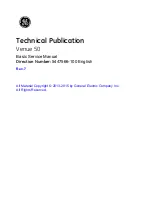
KTR-STOP
®
S-xx-F B-xx
Operating/Assembly instructions
KTR-N
Sheet:
Edition:
44590 EN
23 of 26
3
Please observe protection
note ISO 16016.
Drawn:
2018-09-10 Shg/Wie
Replacing:
KTR-N dated 2018-02-07
Verified:
2018-09-10 Shg
Replaced by:
!
Oils and greases containing molybdenum disulphite or zinc sulphite additives must not be
used.
Illustration 22: Assembly of gasket and scraper
Illustration 23
!
Inspect the surfaces of the brake piston and the hole of the housing to make sure that they
are neither scratched nor damaged, since the surfaces are either ground or polished. Such
kind of damages may cause earlier wear on the gaskets and scrapers and generate leaka-
ges.
Insert the brake piston (component 1.2) into the brake caliper and press it against a stop.
Shift the set of disk springs (component 1.6) into the brake piston (component 1.2). Make sure that the disks
are located on top.
Grease the disk springs properly with Molykote MoS
2
.
Please make sure that the set of disk springs is mounted in the same arrangement as it was
supplied.
If a new set of disk springs is used, the condition of supply needs to be observed in detail.
Screw the setting nut (component 1.7) into the housing and set it to the right dimension (see illustration 19).
Put the opening pressure (see table 2) onto the hydraulic system.
Hand-tighten the screw with the disk (assembly lock, see illustration 18) into the setting nut (component 1.7).
Release the pressure from the hydraulic system.
Insert a new O-ring (component 1.9) between the brake caliper and the setting nut.
After having disassembled the pin of the internal centering system (component 5.1), screw the pin (component
5.1) into the brake caliper. Afterwards screw the hexagon nuts (component 5.2) onto the pin.
Fit the pre-assembled unit carefully onto the guide pins.
Please make sure that the centering system (component 5) is not damaged.
5
Maintenance
5.2 Maintenance of the brake / replacement of single parts




































